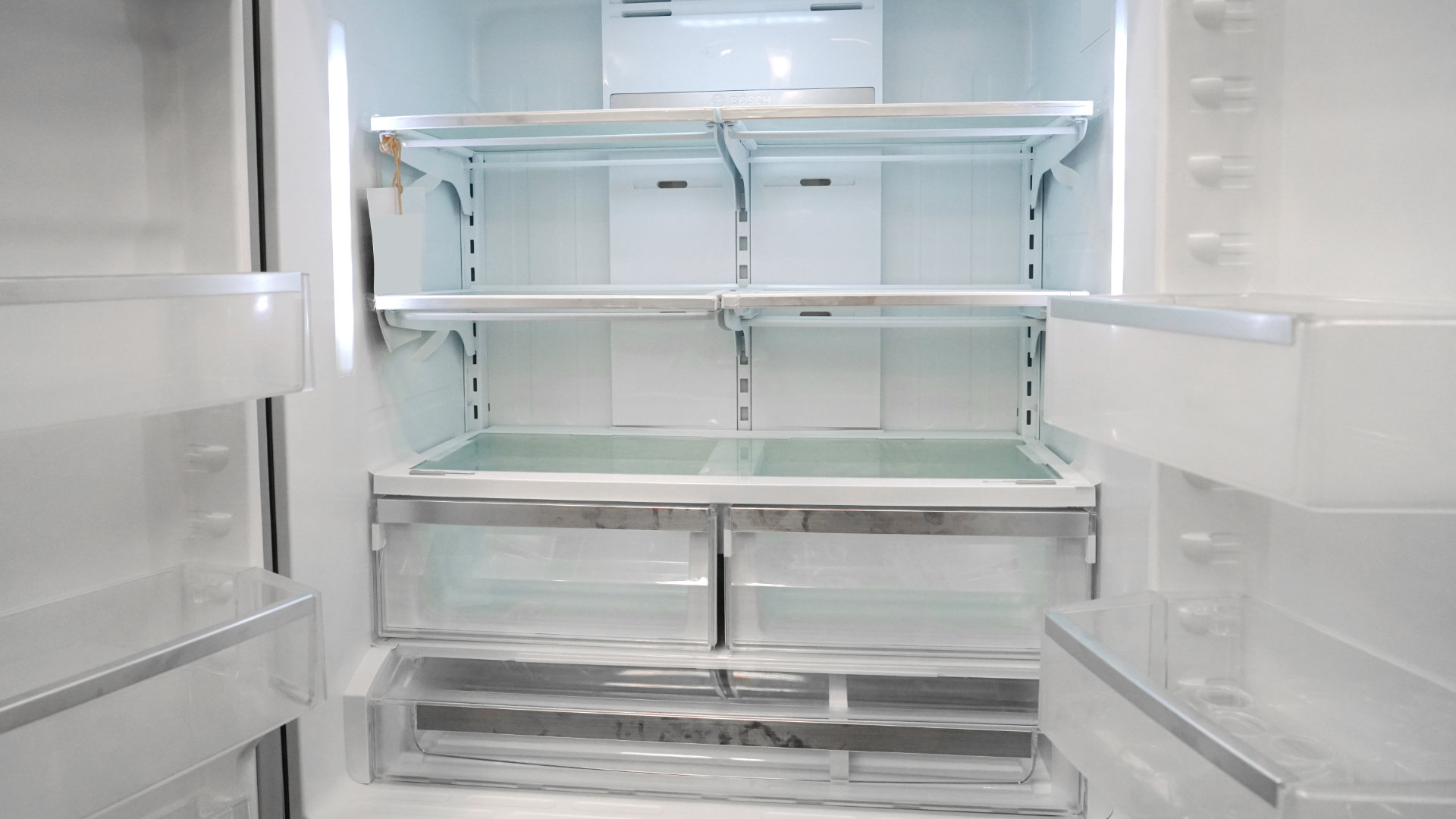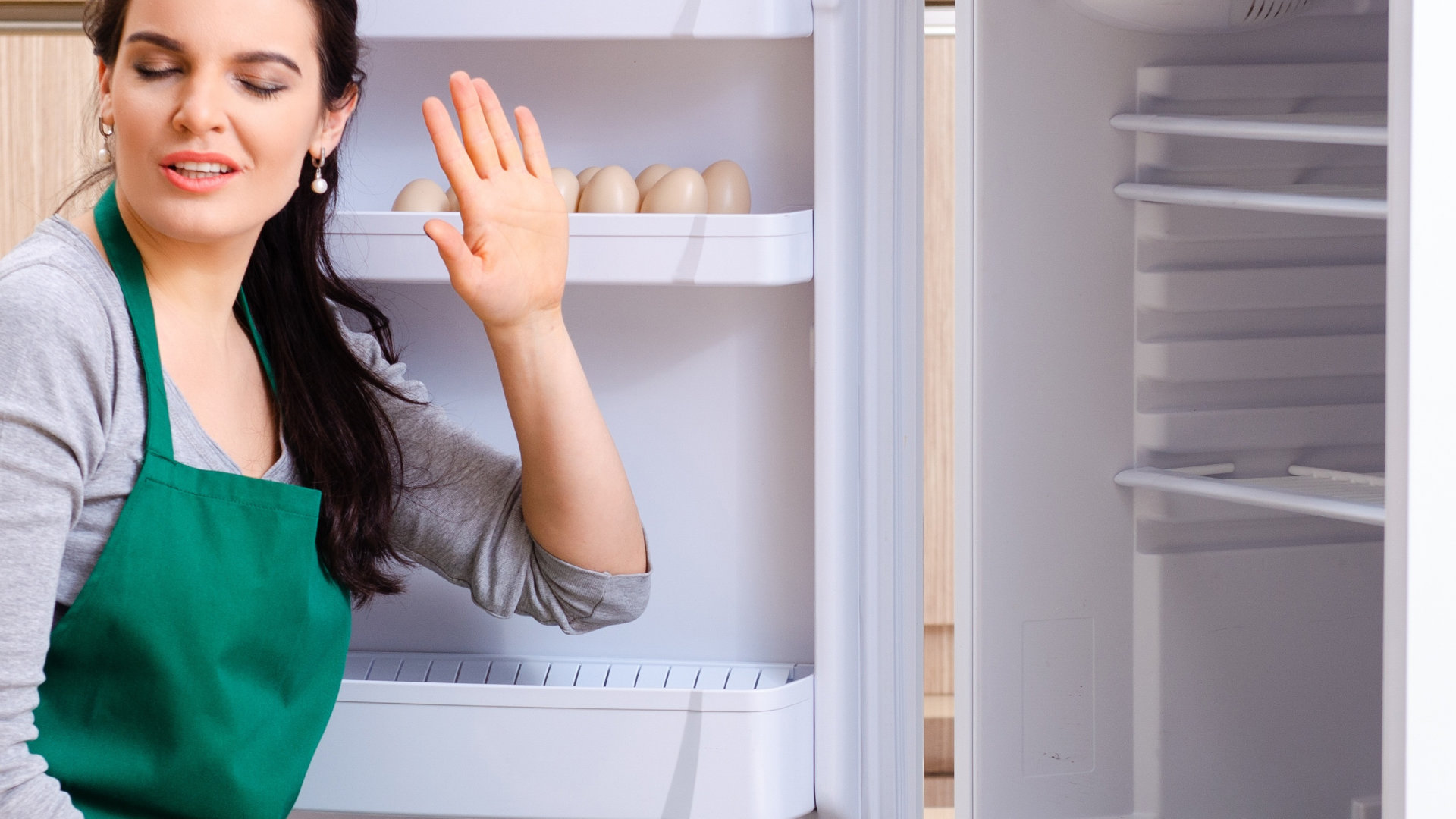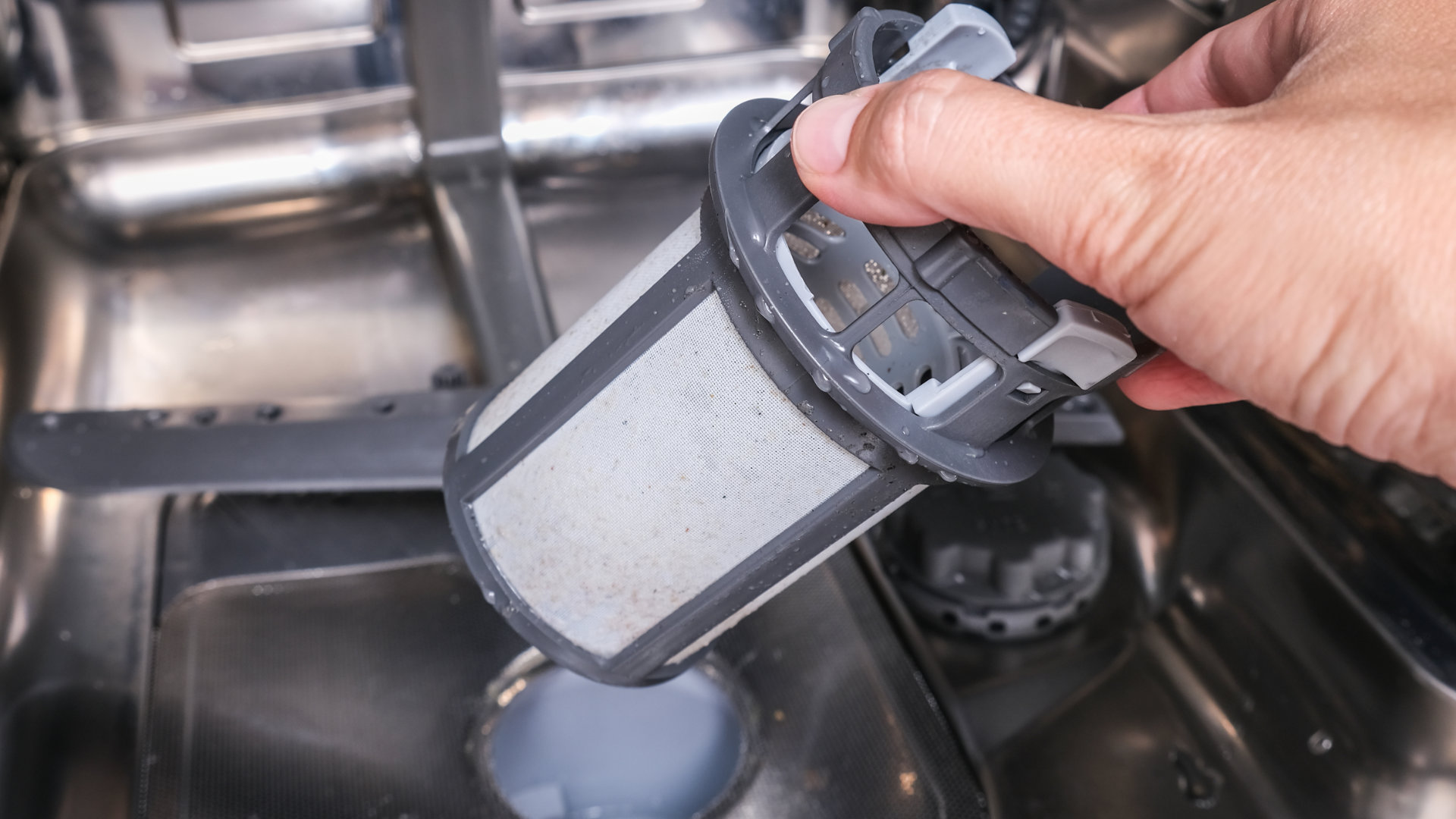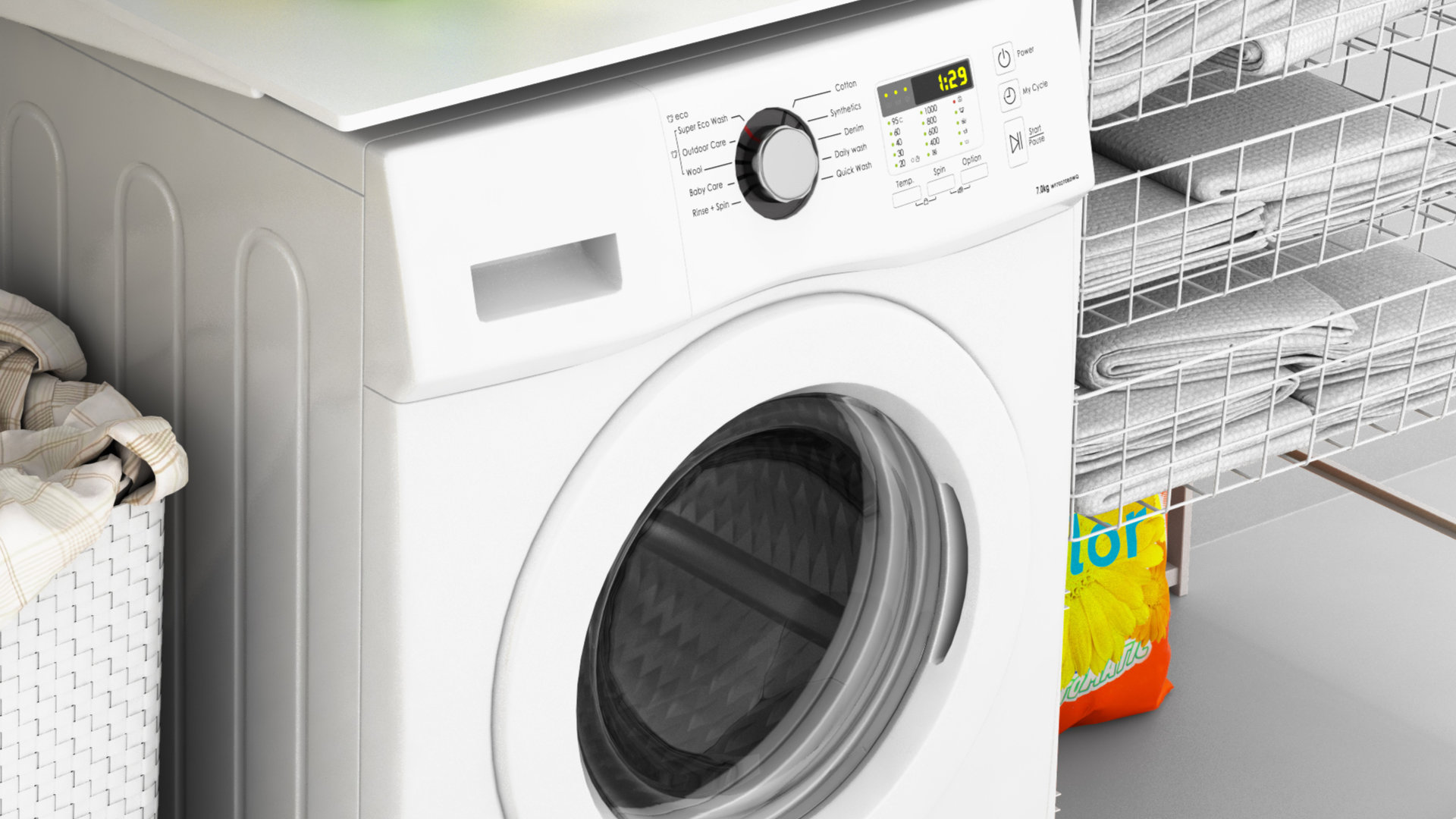
When you run your dryer, certain noises are expected. The sound of the rotating drum, the sound of the clothes tumbling, these are normal. You are probably also used to the sounds of vibration from the motor running and maybe even a little wobbling from uneven feet. However, clacking, scraping, and clicking sounds are a little harder to ignore.
When you hear that sound of metal on metal, your ears perk up and your brain pays attention for further sounds of malfunction. Is it a broken piece of the dryer, or a busted belt? Is it a lost ball bearing or the sound of something starting to fail? Or is it a normal sound coming from clothes and buttons inside the dryer? These are important questions to ask. Normally, your ears and a little light investigation can get you the answers.
So why is your dryer making a clicking sound? Let’s find out.
Clothing Hardware
The first and most common cause of an irregular clicking sound in your dryer is clothing hardware. By this, we mean buttons, snaps, zippers, and drawstring charms. Anything that is hard metal or plastic attached clothing can potentially make a clacking and sliding noise. Shirt buttons are the most frequent cause of this sound, followed by the zippers and metal buttons on jeans. For the most metal scraping and clacking noise, look to hoodie and jacket zippers with long lines of tiny metal pieces and a heavy metal pull to flop around inside the dryer.
The last possiblity for clothing hardware is drawstring charms. For hoodies and other decorative clothing with drawstrings, some feature metal string-tips or even charms that add to the clothing’s style. These, too, can fly round on tumble and hit the metal walls of the dryer.
To prevent his kind of clacking, there are a few things you can do. Turn clothing inside out and zip-up jackets. For charms and un-wrappables, tie them in a sock with a hair tie.
Items in Pockets
The next most common culprit of dryer clacks is items in pockets. Loose change, keys, lighters, pens, and other frequently pocketed items are likely to fall out of pockets at some point during washer agitation or dryer tumbling. From there, it tumbles around in the dryer with the clothes and eventually reaches the edge, where it begins to rhythmically clack against the metal dryer walls with each tumbling cycle.
However, it’s also possible that the clacking you’re hunting down is still inside a pocket. A thin pocket and a hard object combined can create a slightly muffled clacking or light thumping sound with each rotation instead, even though the object is still hidden.
Empty your pockets before dropping clothes in the hamper. And when loading laundry into the washer, check pockets briefly for anything that might still be there. Items tend to get damaged when washed and dried, and they can damage your washer or dryer. So the pocket protocol is pretty important, not to mention preventing annoying clacking sounds.
Shaking and Tapping
What if your dryer recently started to make a tapping sound? Not the rhythmic click-clack of an item tumbling in the dryer, but a rapid tap-tap-tap-tap when the dryer runs. This type of sound is actually caused by vibration, not anything specific inside the dryer. A dryer that shakes just a little bit and is in contact with another surface will make this tapping sound.
For example, if one corner of your dryer is touching the washer, a counter, or a nearby wall, then it may shake a fraction-inch away from the item and back again creating a very fast sequence of tapping sounds. The solution for this can be one of three things. If your washer and dryer don’t “walk” (move across the floor) then you can adjust them so that they don’t touch each other or any nearby wall. If they do walk and tend to come back to that tap-point, place a stick-on pad onto the corner that taps. You can also reduce the possibility of walking and tapping by leveling and padding the feet.
Loose Panels
Another vibration-related sound that can cause a clicking or tapping from your dryer is a loose panel. Particularly the back of the control panel, which is the easiest and most frequently removed for maintenance. If one of the screws, especially near a corner, is loose then the loose edge can rattle and tap when the dryer runs.
If you can’t seem to find the cause of your dryer’s clicking sound, do an all-points check on the exterior panels. If you find a loose corner, this may well be the cause. Secure the screw and, if necessary, at a vibration pad to reduce the risk of the screw shaking loose again.
Items On Top
You should also check for items on top of the dryer. We often lose track of items that go onto the dryer because they seem stationary. But they’re not. Every item on the dryer shakes, rattles, and might move a little bit when the dryer runs. The vibration of the dryer can cause the items on top of the dryer to shake in a way that can create that tapping sound.
Consider the sound of loose change on the dryer. A stick, a bottle of detergent, or a box of dryer sheets can absolutely rattle and tap on the dyer. Especially if the top of your dryer is shaped or not completely flat.
Rattling Exhaust Duct
Finally, check your dryer exhaust duct. This is the duct where hot, damp air leaves your dryer. Most people have a flexible shiny silver tube leading to the vent near your dryer. some people have a more permanently installed duct. But anything attached to your dryer can rattle when it runs and the duct is attached with metal parts. Check the brackets, the duct, and the vent itself for loose parts that might be rattling or clacking.
Tighten any loose screws and replace any broken or damaged parts, as dryer ducts are often minorly damaged.
—Hopefully, this short guide has led you to find the source of your dryer’s clicking and find a solution. If you cannot find an external or laundry-related issue, it may finally be time to call for a repair technician. Contact us today for assistance with an unidentified clicking sound in your dryer. We’ll help you get to the bottom of it.

How to Reset a Whirlpool Refrigerator Ice Maker

6 Reasons Your LG Refrigerator Is Not Making Ice

Kenmore Fridge Ice Maker Not Working? 5 Ways to Fix It

How to Remove Fish Smell from Your Refrigerator

How To Fix Bosch Dishwasher E24 Error

Troubleshooting a Whirlpool Dishwasher Not Draining

Why Is Your Fridge Water Not Working, but Ice Is?

How to Fix the E15 Bosch Dishwasher Error Code

How Much Power Does a Microwave Use?

How to Properly Clean Refrigerator Coils

How to Fix an LG Washer Showing OE Error Code

Troubleshooting a GE Dishwasher with No Power and No Lights

10 Reasons Why Your Bosch Dishwasher Won’t Start

Troubleshooting the F5 Error Code with a Maytag Washer


